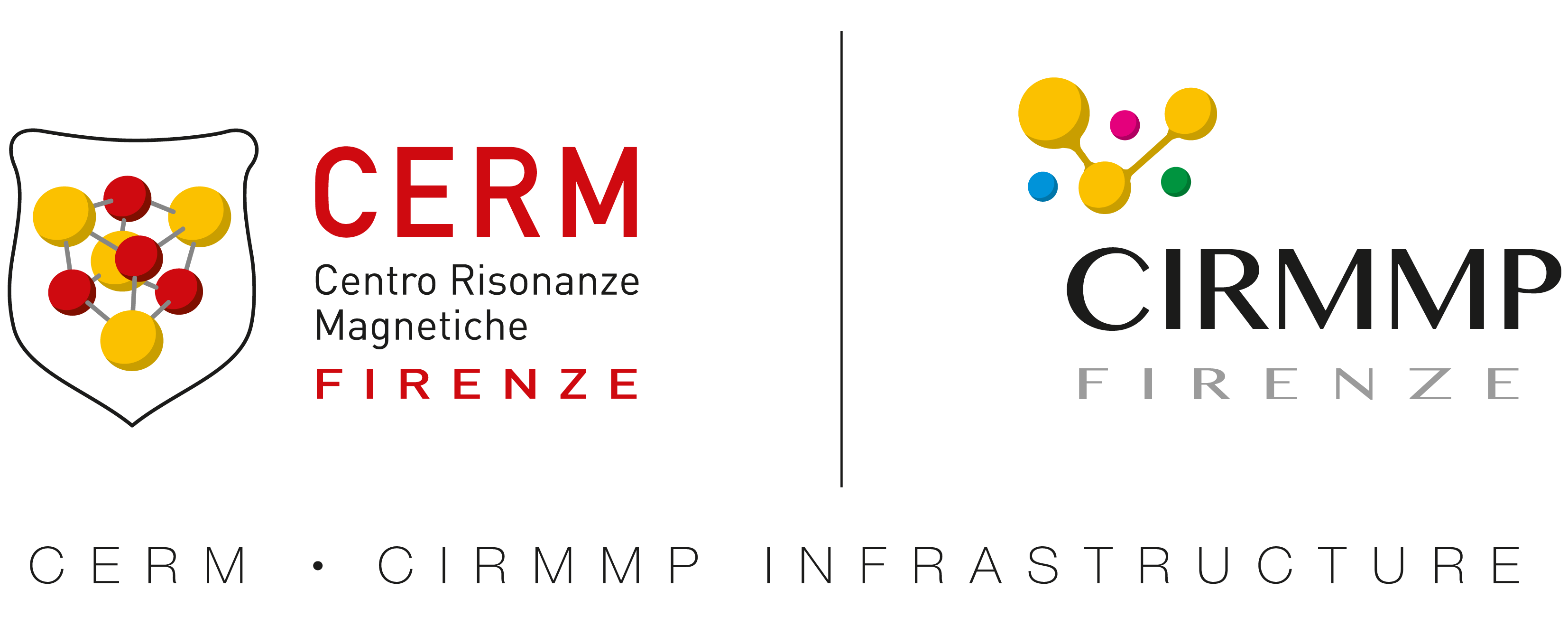The program performs the calculation of the cross-correlation between the dipole-dipole interaction and the Curie spin relaxation. The effect of anisotropic magnetic susceptibility is taken into account. Protein atom coordinates are needed as input data. A file containing a list of atoms for which the calculation is required is also needed. The position of the metal ion, the Euler angles defining the metal susceptibility frame with respect to the lab frame and the metal susceptibility anisotropies (in m^3) must be provided.
References
Bertini I, Kowalewski J, Luchinat C, Parigi G, 2001, "Cross-correlation between the dipole-dipole interaction and the Curie spin relaxation: the effect of anisotropic magnetic susceptibility", J Magn Reson, 152:103-108.
Readme
The program requires the following parameters:
Pseudocontact shifts file (input)
Pdb file (AMBER) (input)
Observed out file (output)
Main out file (output)
Number of atoms for each structure
Number of superimposed structures
Number of paramagnetic centers
Atomic number of the paramagnetic center(s)
Percentual value of tolerance (0-1)
Would you like reference system(s)? (Y/N)
Unique reference system
Atom number which fixes the x direction of the reference system
Atom number which fixes the origin of the reference system
Atom number of the other point in the plane x-y
Number of independent simplex calculations
Pseudocontact Shifts File Format
-----------------------------------------------------
Field | Column | FORTRAN |
No. | range | format | Description
-----------------------------------------------------
1. | 1 - 4 | I4 | Residual label number
- | 5 - 5 | 1X | Blank
2. | 6 - 8 | A3 | Residual name
- | 9 - 9 | 1X | Blank
3. | 10 - 13 | A4 | Name of atom whose
shift is observed
- | 14 - 14 | 1X | Blank
4. | 15 - 22 | F8.3 | Observed shift value
- | 23 - 26 | 4X | Blank
5. | 27 - 29 | I3 | Multiplicity (1,2 or 3)
6. | 30 - 37 | F8.3 | Measure tolerance
7. | 38 - 45 | F8.3 | Weight
-----------------------------------------------------
where:
Multiplicity: This indicates how many pseudocontact shifts have to be averaged before comparing the result with a single experimental one. This is relevant for methyls or fast rotating phenyl rings. When this number is 2 or 3 the averaged pseudocontact shift is compared to the one found in the first or the second line following the one being read.
Tolerance: Reasonable values are 0.3 ppm and 0.5 ppm for non-exchangeable and exchangeable protons, respectively.
Weight: This is used for the evaluation of the pseudocontact shift value.
An example of the file:
1 2 3 4
123456789012345678901234567890123456789012345
---------------------------------------------
1 ALA HA 0.20 1 0.50 1.000
1 ALA HB1 0.37 3 0.50 1.000
1 ALA HB2 0.37 1 0.50 1.000
1 ALA HB3 0.37 1 0.50 1.000
2 ASP- HN 0.22 1 0.50 1.000
2 ASP- HA 0.25 1 0.50 1.000
2 ASP- HB2 -0.02 2 0.50 1.000
2 ASP- HB3 0.35 1 0.50 1.000
Atom coordinates file (Amber format):
The required input data are:
Record ID (eg ATOM, HETATM)
progressive atom label number
atom name
residual name
progressive residual label number
atom coordinates
with FORTRAN format:
5x,i6,1x,a4,1x,a3,1x,i5,4x,3f8.3
An example of the file:
1 2 3 4 5
123456789012345678901234567890123456789012345678901234
------------------------------------------------------
ATOM 1 N ALA 1 14.765 -2.176 7.671
ATOM 2 HN ALA 1 15.609 -1.769 8.019
ATOM 3 CA ALA 1 14.556 -2.026 6.240
ATOM 4 HA ALA 1 14.919 -2.933 5.756
ATOM 5 QB ALA 1 12.704 -1.846 5.887
ATOM 6 CB ALA 1 13.060 -1.881 5.955
ATOM 7 HB1 ALA 1 12.782 -2.534 5.128
Main output file:
The file displays the results of the fitting procedure: the fitted tensor parameter values, the calculated pseudocontact shifts, differences between experimental and calculated pseudocontact shifts, residuals (sum of the errors over all atoms). Also indicated are the violations for each atom of each input structure (indicated by stars in correspondence of each protein structure of the family).
Download the files:
